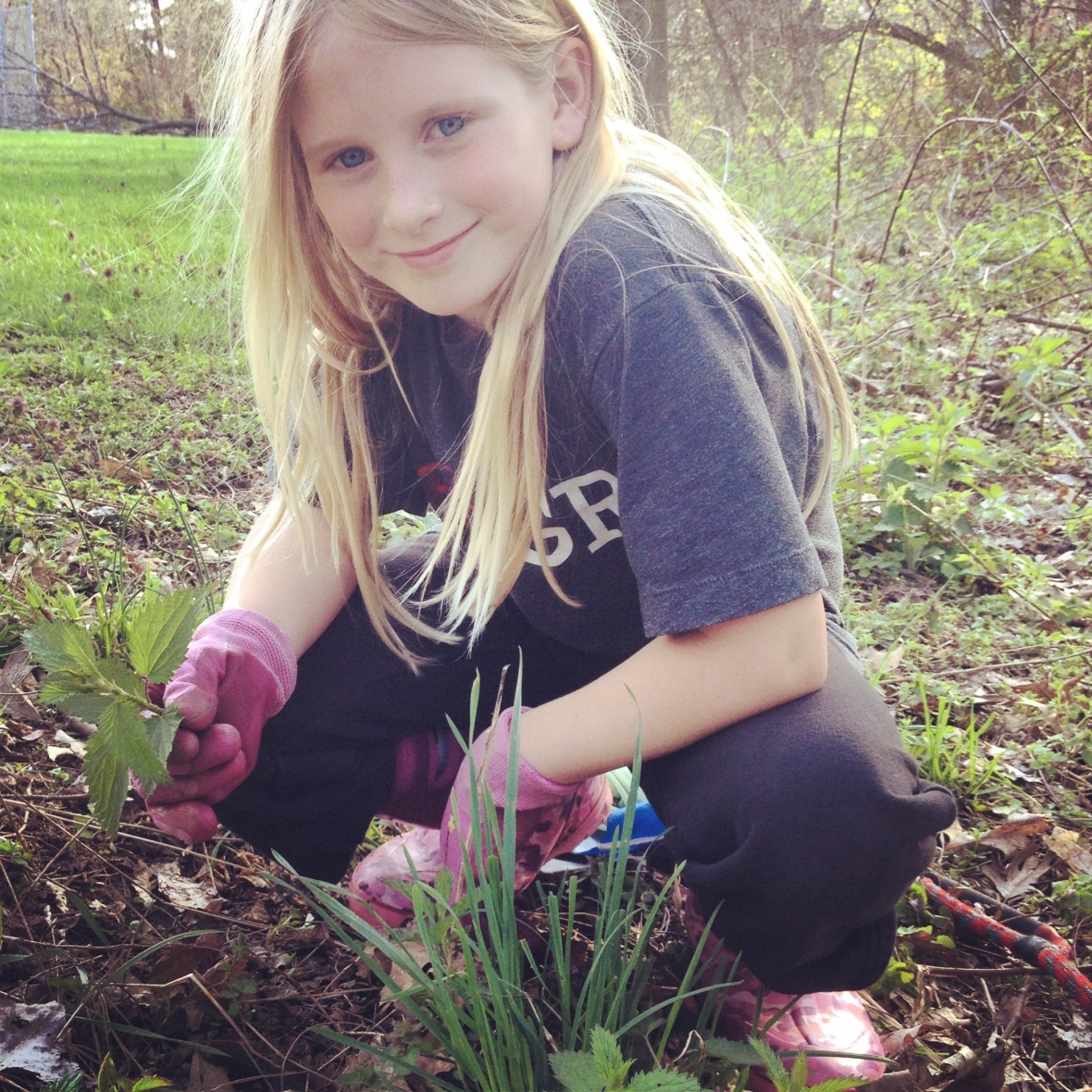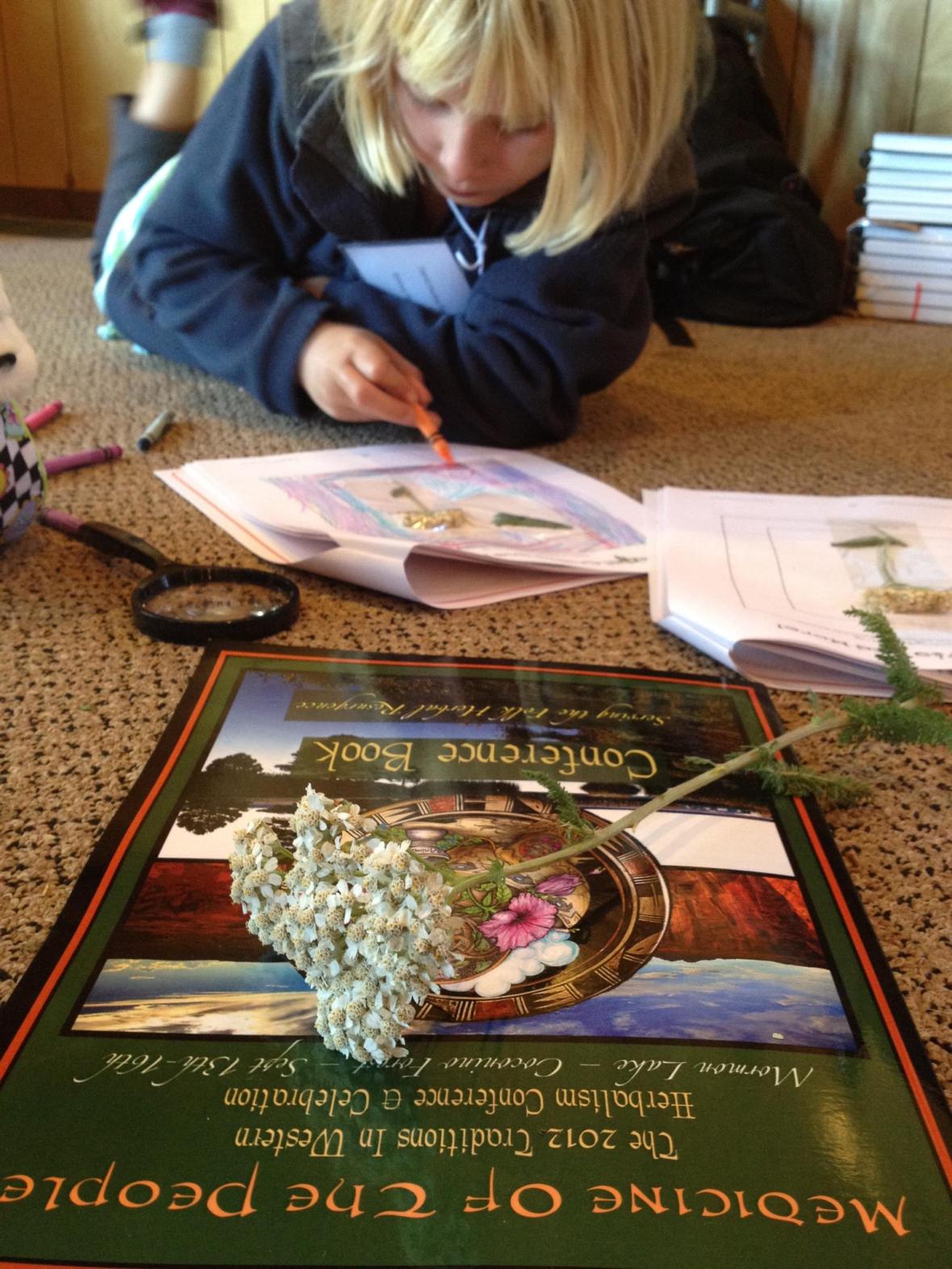Spring Break Fun: Junior Forager Adventures

Spring break is a time to load the car and head South to warmer climes, don sandals and enjoy the outdoors.
If you are headed out of town, be sure to visit area nature centers and eco-preserves to walk the trails and experience the land that might be different than in the Great Lakes. This is a great chance to expose children to plants that they wouldn’t find perhaps in their own neighborhood. Who knows? You may find your kids recognize some plants that are also found in Michigan!
If you are staying in Michigan over break, get the kids, neighbors’ kids and even dog outdoors to plan a Junior Forager adventure. Foraging can be one of the perfect activities for a staycation. You needn’t be heading to any place exotic to become a forager – foraging is an activity that can – and should – start as nearby in your own yard.

Parents may say, “What’s outside now that I can forage or harvest?” or “How do I know what’s edible?” or “Where do I start if I want to forage?”
If you want to forage, head outside!!! Here are my top five tips for Spring Break Foraging 101:
1) Head to the library and select a few good plant field guides for help with plant ID. I think Sam Thayer is one of the best wild edibles authors, but for beginning botany the Petersen field guides are a good start, and my book – “Midwest Foraging” will be available this June {Preorder here}.
2) Let the kids choose an area or two to explore. I recommend starting with your own yard, then maybe choose to explore a nearby park or a friend’s farm. Always ask permission, never gather from parks with rules against foraging, and most of all – know the plants before harvesting for the sake of safety and the plants’ sustainability.
3) Have the kids pack a notebook, colored pencils, a camera, and be sure they dress in weather appropriate outdoor clothing. Pack a lunch, too, if that’s your fancy. Make a day of it.
4) Then, head out, and pay attention. Practice your botany. Map plants on a notebook, notice their leaves, maybe sketch them in a book or take pictures with a camera.
5) Only taste and plants if you are 100% certain of their edibility. A few early spring favorites are violets, dandelions, garlic mustard and early field garlic. As the weather warms, the plants are going to take off! It’s also a good time to get those kids planting peas while you’ve got them outside!!!

Let this journey be kid-led. Let them explore the outdoors, make a plant journal and even let them get muddy boots. Create a cool certificate or badge for those kids completing the adventure and to celebrate trying something new. It’s a low-cost, high-yield activity that offers lessons to last a lifetime.
Want to have a few great materials to complement your wild plant learnings with kids? Check out Herbal Roots Zine – a great monthly plant magazine designed to help kids (and adults!) learn about plants and their uses!
Need expertise to organize a “Junior Foragers” adventure? Drop me a line to discuss private events at lisa.marlene.rose@gmail.com. Perfect for birthday parties!!!
